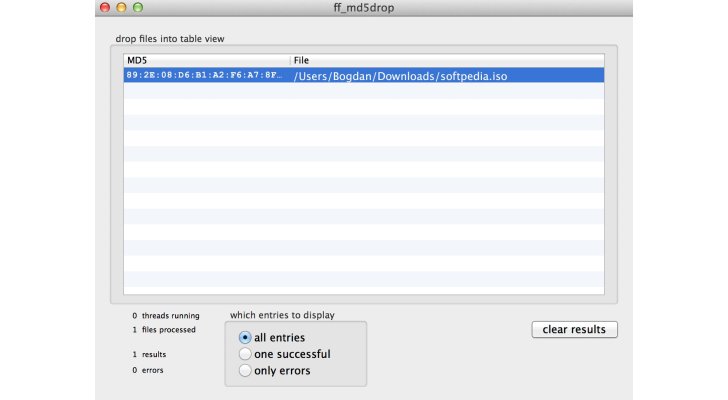Checksum Tool For Mac
Mac OS X, does not come with md5sum installed by default, but it comes with an equivalent tool that you can use instead. To calculate the 128 bit MD5 hash of a file, run this command. Check SHA1 Checksum in Mac OS X. For common usage, a SHA checksum provides a string that can be used to verify a file been transferred as intended. If SHA checksums match, the files integrity has been maintained. This website and third-party tools use cookies for functional, analytical, and advertising purposes. On Mac OS X we sign our installers so the Gatekeeper program will allow it if you have 'identified developers' selected. In the example screenshot below (click for a large view) only the App Store is allowed and hence our installer, even though it is signed, is blocked from running. Third Light Desktop Upload Tool for Mac OS v.1.2 This tool provides a drag-and-drop upload interface, to help you conveniently upload media to your Third Light IMS server directly from MacOS X. Partition tool free for windows 10. Third Light IMS is a networked digital media storage / digital asset management system, used for.
Disclosure: Links in this post may be to our affiliates; sales through affiliate links may benefit this site. Please help support wolfcrow and buy from. It won’t cost you anything extra.

Checksum Tool Download
In we understood what checksum software is supposed to do. In short, it ensures data integrity. The other two major functions of a DIT which concern us here are video backup and digital asset management. This part will cover a typical on-set data wrangling workflow. Then, we’ll look at the software available today that performs these functions.
By the end, you should be in a strong position to decide on the right tools for your workflow. A typical on-set data workflow The basics of on-set data management have already been covered in the in the Comprehensive Guide. In it we covered: • • • Building a Data Station • Transcoding • Choosing a Computer and Cart, etc. Exclusive Bonus: my free swipe file on how to shoot night scenes well (PDF file optimized for mobiles and tablets). This is what an on-set production data management workflow looks like: The phone represents the ever-attentive DIT who monitors everything that is happening on set. The DIT gets the Video and Audio files, possibly separately.
Checksum Tool For Windows 10
These files can come together, at the end of a take or session, or at different times. A good DIT should always be ready to accept data, and gracefully at that. Each file container format has its own metadata. In addition, new metadata can be created by using tools such as Adobe Prelude, Color tools for on-set grading, etc.
Finally, a DIT can also get paper notes in the form of logs, notes, etc. The first job of the DIT is to understand where each metadata goes, and why it should be so. Color metadata could go to the editor and the colorist, or maybe just the colorist. Audio metadata might only be for the Sound Editor, while shot metadata might only be for the Editor, etc. Every workflow brings its own set of challenges. Each file format has its own metadata structure. The workflow is different if you’re working with Redcode, Arriraw, F65RAW, MXF, XDCAM, XAVC, etc.
Checksum Tool Online
Good software will take care of this easily. The tough part is choosing the right software. The next job of the DIT (which actually happens a lot earlier than when he or she gets on set) is folder management. How do you structure your data for easy accessibility? Also, some data management apps have tags or keywords ability that will help you find your footage faster.
No matter how a DIT wishes to tackle the problem, he or she must be organized in mind and matter (the computer), and be prepared for all eventualities. Snipping tool for mac clipboard. To know more about digital asset management, read Once the metadata and folder structure is sorted out, it is time to make backups of what has been shot. As we saw in Part One, a checksum verification software ensures the data is the same whenever it is copied. The checksum algorithm is represented by the dog, ever vigilant, and always watchful.